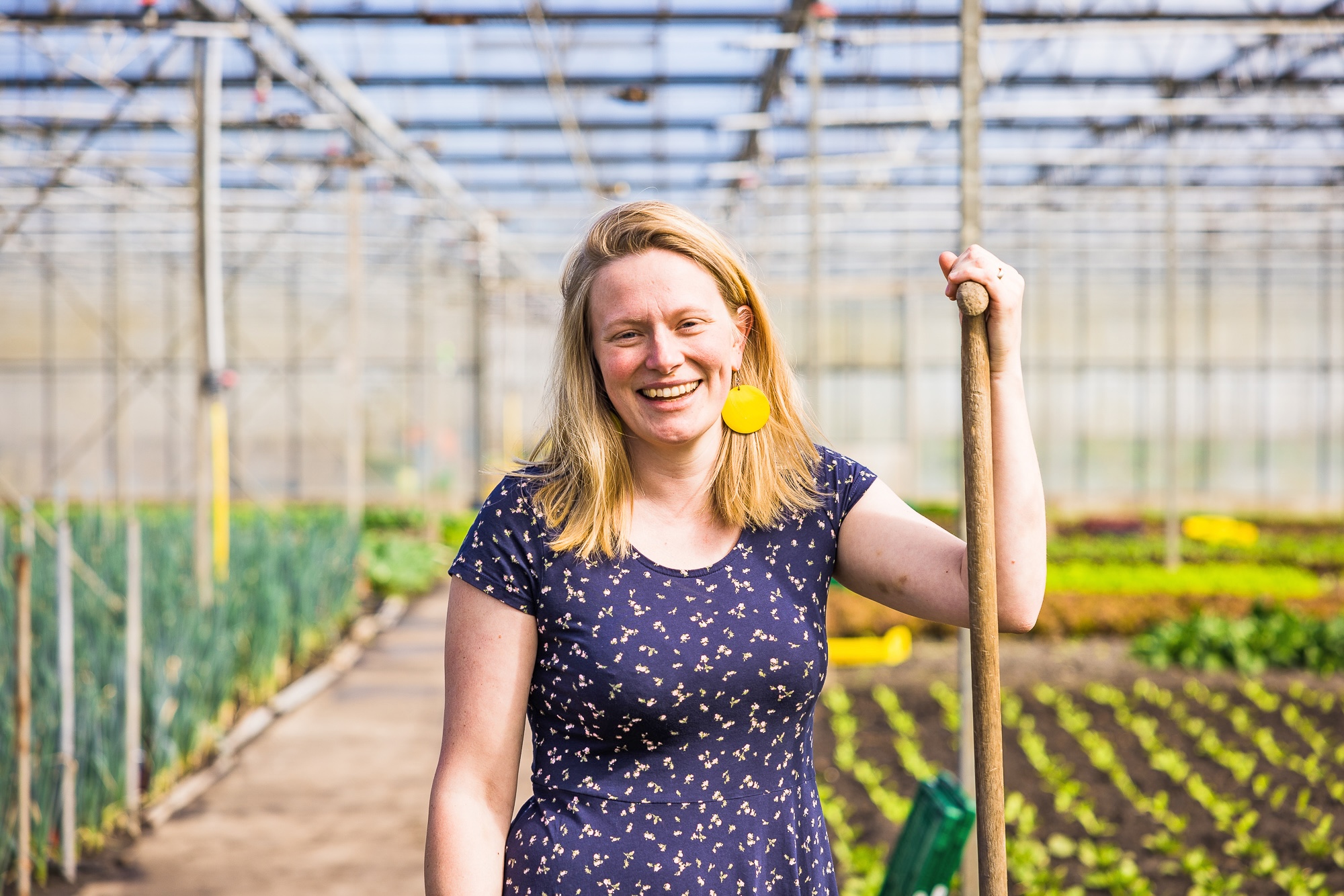Sandra Ronde has been building her Streekboer concept since 2015, based on a mission to make the local food chain profitable in the northern Netherlands. 'Things are going way too slow for me,' says the inspired entrepreneur. "Because we want to make more impact, I participated in the Business Innovation Program Food.
'And it proved good to step out of my own bubble for a while. I started it with the idea of learning how to appeal to new customer groups. I had been told before that we should do more marketing. But I discovered in the BIPF process that we could use our existing customer base much more actively in the growth process.'
Asking the right questions
On average, some six hundred committed customers from Friesland, Groningen and Drenthe order regional products every week. 'Toward the future we are thinking much bigger,' Sandra emphasizes. 'Our goal is to make local food accessible to everyone in the Northern Netherlands. To get there, we need to make better use of a valuable source of information: our current customers. An important basis in the BIPF was thorough customer research. Above all, I learned to ask the right questions. People often respond positively to our sympathetic concept, but that says nothing about their buying behavior in practice. That is what you have to ask, and that is what I have done.
Sandra discovered how people do their shopping, what practical considerations play a role, what obstacles there are and why they sometimes drop out of Streekboer anyway. 'I now have more insight into buying motives,' she says. 'It is also interesting that in rural areas the need for our concept is greater, because there is less supply there than in the cities. I liked the confirmation that the local factor is decisive for ordering from us. People have more confidence in food from their own region. Yet convenience and habit are also important factors. We can respond to that by optimizing our ordering process and further expanding the options for pickup and delivery.'
Regional farmer ambassadors
'The business scan of the BIPF was also valuable: what phase is Streekboer in and what activities belong there? This is how I discovered that we can get more out of existing customers, instead of focusing on new target groups. For example, if people buy from us on a rotating basis, the challenge is to motivate them to order more often. Something as simple as a reminder e-mail already seems to work. We are now going to set up our systems better for this and monitor customer purchasing behavior. Because the innovation program also made me realize that they can help us reach the next shell. By being ambassadors for Streekboer and introducing new customers within their own environment. It's up to us to excite them in an appropriate way.'
According to Sandra, the Streekboer newsletter is the strongest channel for this. 'Furthermore, we organize activities with and at farmers more often, because practical experiences are effective. By continuing to tell why we do what we do, we bring people into our story. Even if they already know Streekboer. That our current customer base is a good starting point for improvement and growth is the best insight I gained through the BIPF trajectory. It gives me peace of mind and focus. Moreover, I remain motivated by our happy customers, farmers and other cooperation partners. We all know what we are doing it for: honest and nourishing food from the region. Every time I come home with a crate full of local produce for my own family, I realize: I wish this for everyone.
Market validation is core of Business Innovation Program Food
A growing number of startups and SMEs have powerful ideas to contribute to the food transition. Yet the failure rate in food innovation is still extremely high: as many as 95 percent cannot get a healthy business case off the ground. When it comes to our food, we apparently don't change that easily. Or are entrepreneurs insufficiently concerned with customer needs?
Exactly that - checking customers' needs - appears to be a promising area for improvement. 'Market validation, market validation, and once again market validation,' emphasizes Joep de Vries, who is involved in developing North Netherlands ecosystems within the agrifood sector from the NOM. 'The pitfall of many food innovators is that they ask the wrong questions. Because of their enthusiasm for their idea, they miss important information about the market: what needs and problems are there? How do you offer a solution with your product? At the Business Innovation Program Food (BIPF), participants learn first and foremost to conduct thorough market and customer research.
'In addition to raising awareness of what really matters to customers, the BIPF pays attention to the life stage of the company: where are you now and what actions are appropriate? 'We check in five crucial areas: product, market, business model, team and funding,' Joep explains. 'If you spend too much time, energy and money on actions that don't fit the momentum, you will grow skewed in your processes and - at best - be on the road for much longer. In this course, we teach participants to focus and get started as effectively as possible.'
